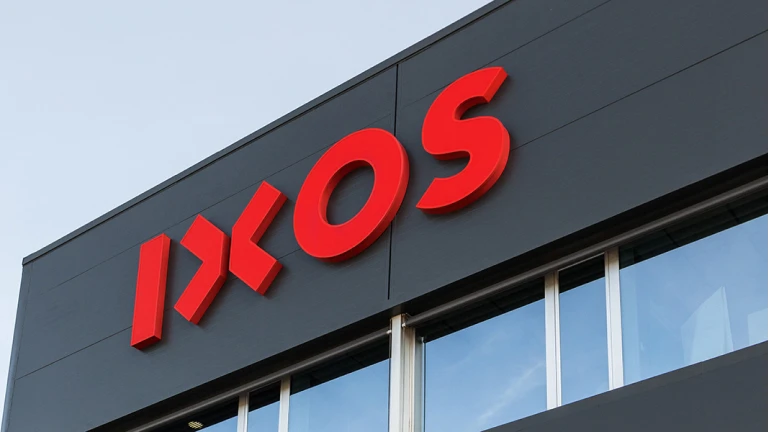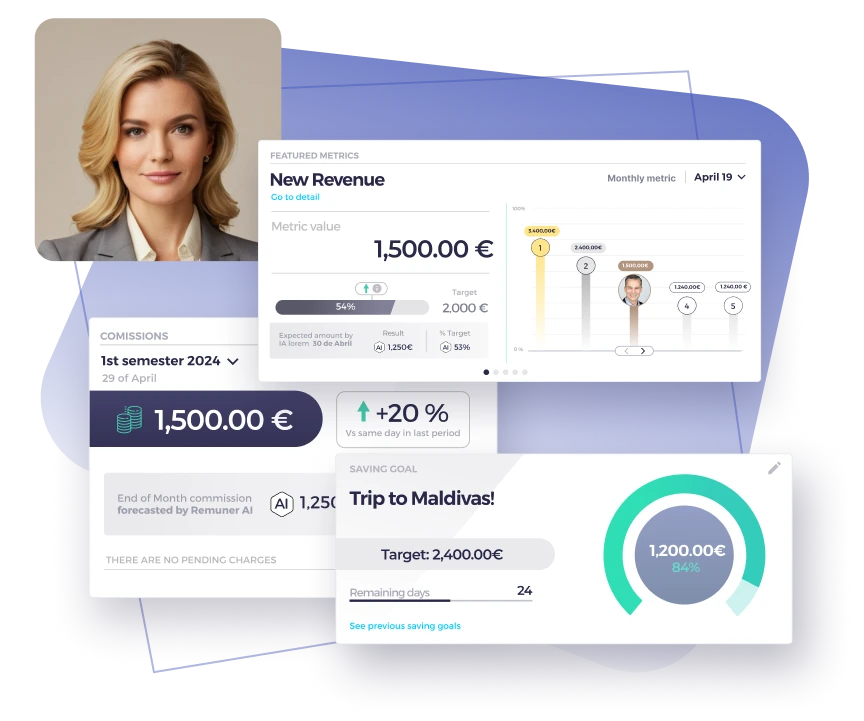Tracking the right sales pipeline metrics is crucial to driving performance and aligning incentives in any sales organization. A well-defined sales pipeline helps teams identify opportunities, prioritize tasks, and meet sales goals. In this post, we will explore essential sales pipeline metrics and how they impact compensation, sales performance, and overall business success.
Table of contents
What is a sales pipeline?
A sales pipeline represents the journey of potential customers from initial contact to the final sale. It consists of different stages, such as lead generation, qualification, negotiation, and closing. Understanding the dynamics of the sales pipeline allows sales managers to make informed decisions about strategy, forecasting, and team management. By focusing on sales pipeline metrics, companies can optimize sales performance and create compensation plans that reward the right behaviors.
Why are sales pipeline metrics important?
Sales pipeline metrics provide valuable insights into the health and efficiency of the sales process. They help managers identify bottlenecks, understand which stages need attention, and allocate resources more effectively. Aligning sales pipeline metrics with compensation plans ensures that sales incentives reflect real performance and motivate sales teams to focus on the right activities.
Key sales pipeline metrics to track
To maximize the effectiveness of a sales pipeline, it is essential to track the right metrics. Here are 15 key sales pipeline metrics that every sales organization should monitor, along with examples, calculation methods, benchmarks, and source URLs.
1. Number of deals in the pipeline
This metric shows the total number of active deals at any given time. Keeping track of the number of deals helps sales managers understand the volume of opportunities and forecast potential revenue.
Calculation:
Number of deals in the pipeline = Total count of all active deals
Benchmarks:
- Bad: Fewer than 10 active deals
- Average: 10-30 active deals
- Good: More than 30 active deals
- Source: Zendesk Sales Pipeline Metrics
Example: A software company sets a target for each sales rep to have at least 30 active deals in the pipeline at all times. Compensation plans reward reps who consistently maintain a healthy number of active deals, ensuring a steady flow of opportunities.
2. Deal size
Deal size measures the average value of deals in the sales pipeline. Tracking deal size allows sales managers to set realistic quotas and sales targets.
Calculation:
Average deal size = Total value of all deals / Number of deals
Benchmarks:
- Bad: Less than $5,000
- Average: $5,000 – $20,000
- Good: More than $20,000
- Source: Lusha Sales Pipeline Metrics
Example: A tech company with an average deal size of $50,000 uses this metric to establish OTE (on-target earnings) targets. Sales reps earn higher commissions on deals above the average size, motivating them to pursue larger contracts.
3. Sales cycle length
The sales cycle length measures the time it takes to close a deal from initial contact to final sale. Understanding this metric helps sales teams identify areas where the process might slow down and make improvements.
Calculation:
Sales cycle length = Sum of days to close each deal / Number of deals closed
Benchmarks:
- Bad: More than 90 days
- Average: 45-90 days
- Good: Less than 45 days
- Source: Scratchpad Sales Pipeline Metrics
Example: A B2B service provider with a typical sales cycle of 60 days rewards reps with bonuses for closing deals faster than the average cycle length, incentivizing shorter sales cycles and improving overall efficiency.
4. Conversion rates
Conversion rates measure the percentage of leads that move from one stage of the sales pipeline to the next. Tracking conversion rates helps identify where prospects are dropping off and which stages need improvement.
Calculation:
Conversion rate = (Number of leads that moved to the next stage / Total number of leads at the previous stage) × 100
Benchmarks:
- Bad: Less than 10%
- Average: 10-30%
- Good: More than 30%
- Source: Zendesk Sales Pipeline Metrics
Example: A marketing agency tracks conversion rates between the proposal and negotiation stages. By identifying a drop-off point, they implement targeted coaching and tie a portion of sales incentives to successful conversions at this stage.
5. Win rate
Win rate measures the percentage of deals won compared to the total number of deals in the pipeline. A high win rate indicates effective sales strategies and strong sales performance.
Calculation:
Win rate = (Number of deals won / Total number of deals) × 100
Benchmarks:
- Bad: Less than 20%
- Average: 20-40%
- Good: More than 40%
- Source: Lusha Sales Pipeline Metrics
Example: An industrial supplier sets a win rate target of 40% for its sales team. Compensation includes a bonus for achieving this rate or higher, encouraging reps to focus on closing quality deals.
6. Average deal age
Average deal age measures how long deals have been in the pipeline. This metric helps identify stale deals that may require action or removal from the pipeline.
Calculation:
Average deal age = Sum of the number of days each deal has been in the pipeline / Total number of deals
Benchmarks:
- Bad: More than 90 days
- Average: 45-90 days
- Good: Less than 45 days
- Source: Scratchpad Sales Pipeline Metrics
Example: A retail distributor tracks the average deal age and sets a threshold of 90 days. Deals older than this threshold are reviewed, and sales reps receive additional incentives to either close or remove them, keeping the pipeline healthy and focused on active deals.
7. Pipeline velocity
Pipeline velocity measures the speed at which deals move through the sales pipeline. It combines metrics like deal size, conversion rates, and sales cycle length to provide a comprehensive view of sales performance.
Calculation:
Pipeline velocity = (Number of deals in the pipeline × Average deal size × Win rate) / Average sales cycle length
Benchmarks:
- Bad: Less than 15%
- Average: 15-30%
- Good: More than 30%
- Source: Zendesk Sales Pipeline Metrics
Example: A telecommunications company sets compensation targets tied to pipeline velocity. Reps who achieve faster velocity through the stages are rewarded with bonuses, maintaining momentum and increasing overall sales performance.
8. Lead response time
Lead response time tracks how quickly sales reps respond to new leads. Faster response times often lead to higher conversion rates and better sales performance.
Calculation:
Lead response time = Sum of the time taken to respond to each lead / Total number of leads
Benchmarks:
- Bad: More than 24 hours
- Average: 6-24 hours
- Good: Less than 6 hours
- Source: Lusha Sales Pipeline Metrics
Example: An insurance company tracks lead response times and sets a target of responding to new leads within 24 hours. Reps who meet or exceed this target receive a performance-based bonus, improving conversion rates and customer satisfaction.
9. Opportunity-to-win ratio
The opportunity-to-win ratio measures the number of opportunities needed to win a deal. This metric helps identify inefficiencies in the sales process and areas for improvement.
Calculation:
Opportunity-to-win ratio = Total number of opportunities / Number of deals won
Benchmarks:
- Bad: More than 10 opportunities per win
- Average: 5-10 opportunities per win
- Good: Less than 5 opportunities per win
- Source: Scratchpad Sales Pipeline Metrics
Example: A logistics provider finds that, on average, five opportunities are needed to secure one win. The company incentivizes reps to improve this ratio by offering bonuses for achieving fewer opportunities per win, encouraging more efficient sales practices.
10. Average sales per rep
This metric calculates the average number of sales closed by each sales representative within a specific period. It helps identify high and low performers and supports better resource allocation.
Calculation:
Average sales per rep = Total number of sales closed by all reps / Total number of reps
Benchmarks:
- Bad: Less than 5 sales per month
- Average: 5-15 sales per month
- Good: More than 15 sales per month
- Source: Zendesk Sales Pipeline Metrics
Example: A consulting firm sets monthly targets for average sales per rep. Reps who exceed their targets receive additional compensation, driving competition and overall performance.
11. Deal closure rate by stage
Tracking deal closure rates by stage shows where deals are most likely to close or fail. This metric provides insights into the effectiveness of each pipeline stage.
Calculation:
Deal closure rate by stage = (Number of deals closed at a particular stage / Total number of deals at that stage) × 100
Benchmarks:
- Bad: Less than 20%
- Average: 20-50%
- Good: More than 50%
- Source: Scratchpad Sales Pipeline Metrics
Example: A digital marketing firm notices a low deal closure rate during the final contract stage. They adjust their strategy and reward reps who successfully navigate this stage with increased commissions, improving overall closure rates.
12. Sales funnel leakage
Sales funnel leakage measures the rate at which deals drop out of the pipeline before reaching closure. This metric helps identify potential issues in the sales process.
Calculation:
Sales funnel leakage rate = (Number of deals dropped from the pipeline / Total number of deals in the pipeline) × 100
Benchmarks:
- Bad: More than 50%
- Average: 30-50%
- Good: Less than 30%
- Source: Lusha Sales Pipeline Metrics
Example: A cybersecurity company tracks sales funnel leakage and finds a high drop-off rate between the demo and negotiation stages. They offer targeted incentives to reduce leakage, such as bonuses for retaining deals through these critical stages.
13. Customer acquisition cost (CAC)
Customer acquisition cost measures the average cost of acquiring a new customer. This metric helps assess the profitability of the sales process and allocate resources effectively.
Calculation:
Customer acquisition cost (CAC) = Total sales and marketing expenses / Number of new customers acquired
Benchmarks:
- Bad: More than $1,500 per customer
- Average: $500-$1,500 per customer
- Good: Less than $500 per customer
- Source: Zendesk Sales Pipeline Metrics
Example: A SaaS company calculates its CAC and finds that acquiring each customer costs $1,000. To improve profitability, they set a target to reduce CAC by 10% and align sales incentives with achieving this goal.
14. Sales forecast accuracy
Sales forecast accuracy measures the difference between predicted sales and actual sales. This metric helps improve future forecasting and planning.
Calculation:
Sales forecast accuracy = [(Predicted sales – Actual sales) / Predicted sales] × 100
Benchmarks:
- Bad: Less than 75%
- Average: 75-90%
- Good: More than 90%
- Source: Lusha Sales Pipeline Metrics
Example: A manufacturing company monitors forecast accuracy and rewards sales managers who maintain a forecast accuracy rate above 90%, encouraging accurate reporting and better planning.
15. Percentage of pipeline coverage
Pipeline coverage percentage measures the ratio of the total value of the deals in the pipeline to the sales target. This metric helps assess whether there are enough opportunities in the pipeline to meet sales goals.
Calculation:
Percentage of pipeline coverage = (Total value of deals in the pipeline / Sales target) × 100
Benchmarks:
- Bad: Less than 100%
- Average: 100-300%
- Good: More than 300%
- Source: Scratchpad Sales Pipeline Metrics
Example: A financial services firm tracks pipeline coverage to ensure they have at least 300% coverage of their quarterly sales target. Sales reps are incentivized to maintain or exceed this coverage to ensure consistent performance.

Aligning sales pipeline metrics with compensation
Aligning sales pipeline metrics with compensation plans ensures that sales teams focus on activities that drive revenue and performance. By incorporating metrics like deal size, conversion rates, and pipeline velocity into compensation structures, companies create sales incentives that reflect real contributions to the business. For example, tying OTE to achieving a specific win rate or reducing the sales cycle length helps motivate reps to improve their sales performance continuously.
How to use sales pipeline metrics to enhance sales performance
To effectively use sales pipeline metrics, companies should regularly review and adjust their compensation plans based on the insights gained from these metrics. Regular analysis allows sales managers to identify trends, make data-driven decisions, and implement strategies that align with business goals. By keeping the sales team informed and involved, companies ensure everyone understands how their performance impacts compensation, sales incentives, and the overall success of the business.
Explore Remuner’s comprehensive sales compensation software to streamline your compensation plans and drive your business growth.





